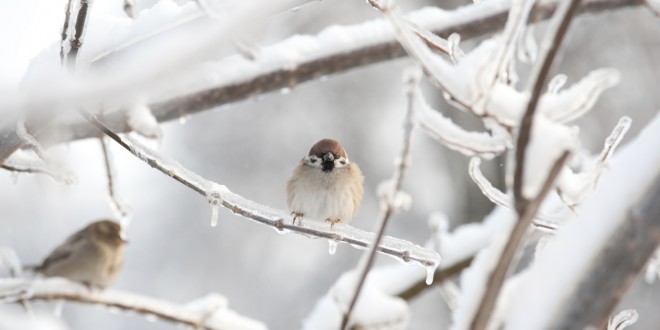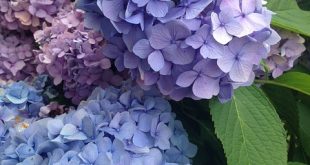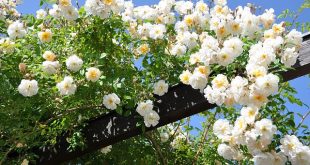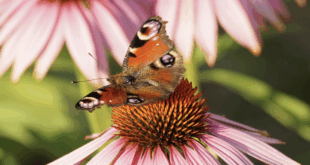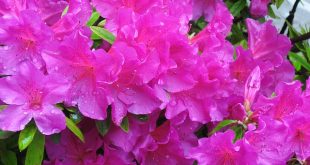The Christmas and New Year celebrations are over, now that January is here, you can start thinking about planning for the year ahead and, if the weather allows, there are a few job to do as well.
On days when the air temperature is above freezing carry on with any pruning and cutting back not done last year. Planting can be undertaken provided the ground is not flooded or frozen. Always put a handful of bonemeal or fish blood and bone in with the planting soil. These slow-release organic foods will help to give the plant a good start in the spring.
Now is the time to get any construction work done that may involve moving large or small plants. Come the middle of March it will be too late.
Frost
A hard ground frost is nature’s way of stratification – maturing seeds and bulbs in readiness for flowering or germination. Many seeds will not even germinate until they have gone through this process. If your soil is heavy clay, dig over and leave rough dug for the frosts to break it down, a cover of gypsum will also help together with the usual organic matter.
House Plants
Have you wondered how hyacinths flower early for Christmas? Refrigerating the bulbs make them think they have gone through a winter; they then develop a bud inside the bulb ready for flowering. Plant your indoor hyacinths outside when they have finished flowering. Allow the leaves to dry off first then plant them in sheltered, well-drained soil. Next year they will flower at their normal time in the spring.
Over 60% of all houseplants apparently die because of over-watering. A plant is more likely to recover from being dry than waterlogged. Most houseplants come with a simple plastic label stuck in or on the pot giving basic ideal conditions – light, shade etc. Assuming it is in the right position there are several ways that you can check if it needs watering. The simplest way is to stick a finger into the top of the soil; if it feels damp then it is ok. Never leave plants sitting in a saucer of water, always empty it after a couple of hours. Flowering plants require attention that is more regular and will benefit from a liquid feed once a week. The foliage types tend to be less troublesome during the winter months. Dr. Hessayon’s ‘Be your own houseplant expert’ is an ideal book to have, it is simple with clear easy to understand photographs and advice, it might even save a few friendships!
Feeding
Warm yourself up and get some post-Christmas exercise spreading compost and other organic matter onto the garden and vegetable plot. Remember, it is not a good idea to grow root crops in ground with manure in it, as it will cause the root to ‘fork’. It can affect Carrots, parsnip and beetroot. Well-rotted manure should have no smell. If offered fresh (smelly) manure, find somewhere to stockpile it or get it on top of the soil; leave it to the weather to ‘dilute’ it thoroughly.
Vegetable Patch
As well as digging over as already mentioned, dust the area that you intend to grow brassicas (cabbage family) with lime, this will help to control the dreaded club root. If you have had a previous problem with club root, rotate the crop.
Greenhouse
If you undertook an autumn sowing of Sweet Pea, pinch out the main shoots when they have reached 6’’ to encourage further breaking. Also early sowings of some of the summer bedding plants, Begonia, Nasturtium, Ageratum can start. You must have gentle heat though, to ward off frosts.
Although there have been plenty of berries around for the birds, with the frosty weather, that food will vanish.
Feeding the Birds
Putting out seed and nuts is an ideal way of encouraging birds into the garden as well as ensuring they survive the winter. Avoid throwing the food onto the lawn, especially if there are cats in the area, a freestanding bird table or one nailed to a fence post is ideal.
Unfortunately, whilst encouraging birds to the garden, it is likely that members of the Finch family will be there too. These birds, although attractive, will strip flower buds from many spring flowering shrubs, particularly Daphne and Forsythia. If you are able, drape a light netting over the top before they flower to protect them.
Lawns
Try to avoid walking on the lawn when it is frosty as this will cause damage to the grass when it thaws – brown footprints will be seen quite clearly. If there is no way of avoiding it, try to use the same path rather than going walkabout. When the weather allows, a light scarifying to remove all the autumn thatch and moss will always be beneficial. Do not apply any chemicals; this will have to wait until the spring, after the first cut.
 Gardeners Club The Gardeners Club is a free to join online club for everyone with an interest in gardening and gardens.
Gardeners Club The Gardeners Club is a free to join online club for everyone with an interest in gardening and gardens.
